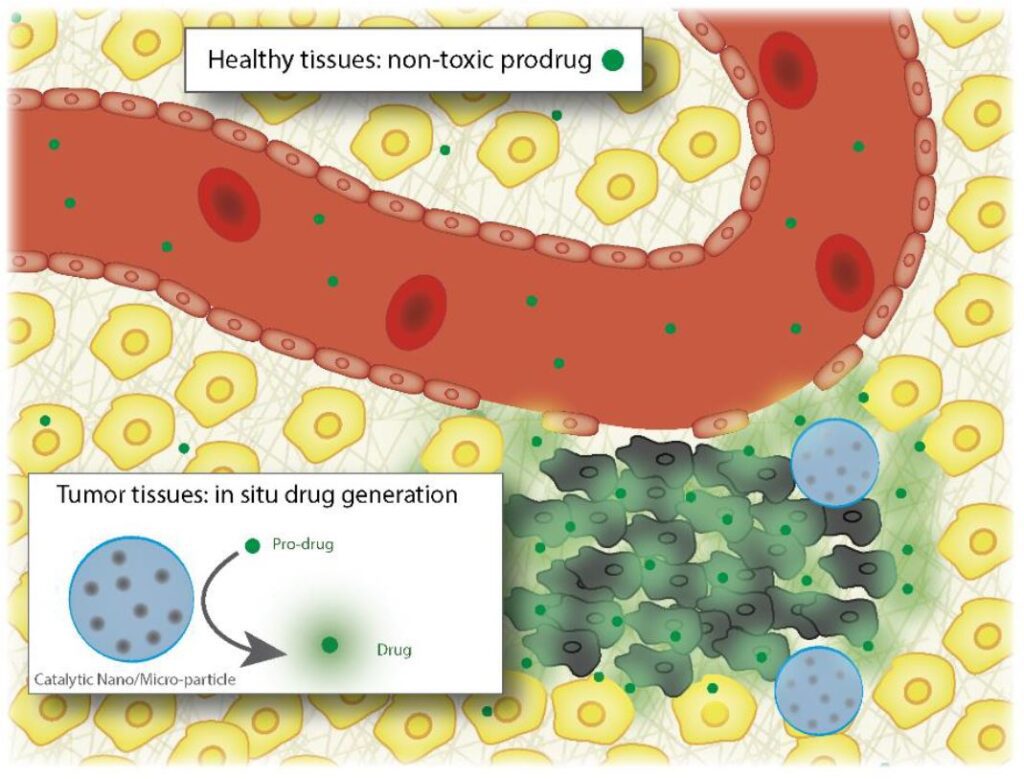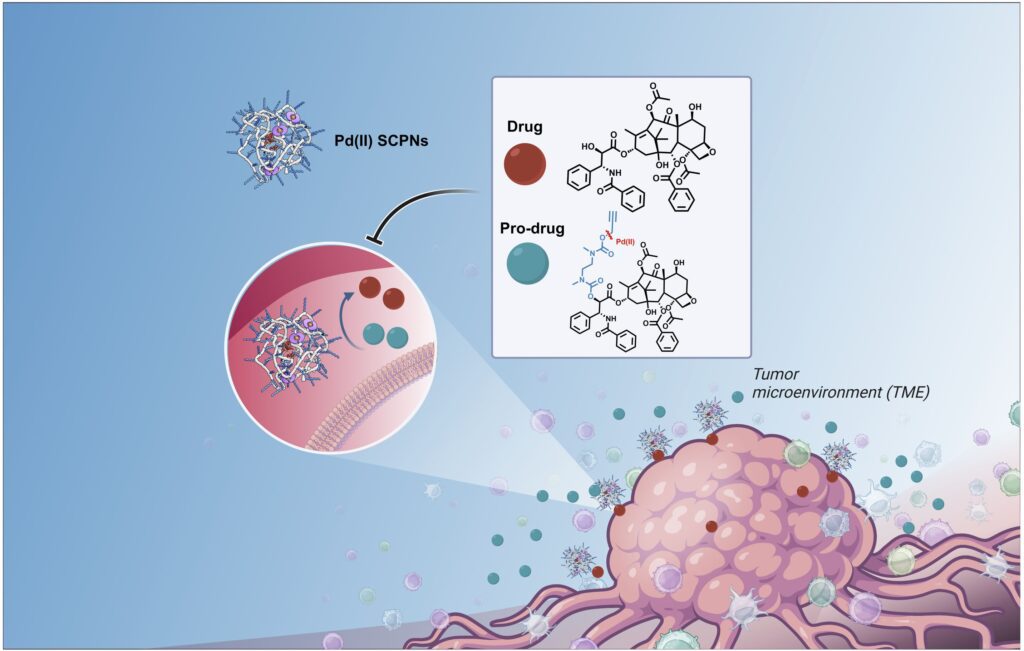Researchers from the European project THERACAT, coordinated by the Institute for Bioengineering of Catalonia (IBEC), have been working for the last four years in developing new strategies to treat cancer in a local manner. By using nanoparticles that can transform a non-active pro-drug into an active drug, they went some steps further in the development of a local treatment for cancer. As the drug gets functional only at the tumour site, the strong secondary undesirable effects of actual treatments would be dramatically reduced, increasing the life quality of patients. THERACAT tackled this challenge with a multidisciplinary approach, combining new nanoparticles and catalyst synthesis, development of microscopy characterization tools and performing in vitro and in vivo assay to assess therapeutic catalysis performance.

The European project THERACAT proposed solutions to this problem by developing new strategies to specifically deliver drugs only to the tumour site. The project is a Marie Skłodowska-Curie European Training Network (MSCA-ITN-ETN) that trained 13 early-stage researchers in different aspects of the novel field of bio-orthogonal catalysis for cancer therapy. It is worth to underline here that, even if the COVID-19 pandemic prevented almost all the planned secondments among researchers to take place, students and laboratories exchanged material, information and knowhow in a very intense way all along the project, maintaining alive the spirit of the European Training Network projects. THERACAT project was coordinated by Lorenzo Albertazzi, leader of the Nanoscopy for Nanomedicine group at the Institute for Bioengineering of Catalonia (IBEC).
This new generation of young scientists was trained to tackle bio-orthogonal catalysis challenges to treat cancer from a multidisciplinary and collaborative perspective, a promising starting point to find new treatments against cancer more effective and with less side effects.
What is Bio-orthogonal catalysis?
Bio-orthogonal chemistry refer to reactions that can take place inside our bodies without interfering with the native biochemical reactions that normally occur. It is an ever-growing field of research pioneered by Carolyn Bertozzi, who received the Nobel Prize in Chemistry 2022. Bio-orthogonal catalysis deals with the use of nontoxic nonbiological metal catalysts to perform bio-orthogonal reactions, and may have health, agricultural and industrial applications.
These reactions include two main steps: first, micro and nanodevices bearing a catalytic unit are delivered to the tumour site, and afterwards, the patient is administered with non-active drugs (known as pro-drugs). These prodrugs enter the blood stream, and when they reach the tumour, the catalytic units at the micro and nanodevices perform a reaction, a bio-orthogonal reaction, and convert the inactive pro-drug into an active drug, that now can exert its function locally only at the tumour site. In a metaphoric way, we could say that the pro-drug is a lock, and the bio-orthogonal catalyst is the key. Bio-orthogonal catalysis are thus very specific, and each pro-drug needs a particular catalytic unit to become active.
Nanoparticles with metals as catalysts
The rationale behind THERACAT was to take profit from bio-orthogonal reactions to activate drugs only at the tumour site, avoiding a systemic action. Early-stage researchers in the project followed different approaches to reach the same goal: to study, to develop and to optimize nanoparticles bearing a catalyst unit, in this case different metals, to efficiently convert pro-drugs into active drugs at the tumour site. Concretely their work focused on four main aspects: i) synthesis and characterization of bio-orthogonal catalytic materials; ii) design of novel anti-cancer prodrugs and catalytic strategies for their activation; iii) development of delivery strategies for the catalytic materials in vitro and in vivo; and iv) evaluate the in vitro and in vivo performances for cancer therapy.
One of the several studies was performed by Anjana Sathyan at the laboratory of Prof. Anja Palmans at the Eindhoven University of Technology, the Netherlands, in collaboration with other laboratories from the project consortium. The results of the work were recently published in the Molecular Systems Design & Engineering Journal from The Royal Society of Chemistry and highlight the importance of matching the catalyst with the right prodrug to achieve a successful drug activation.
Transition-metal-mediated bio-orthogonal reactions for synthesising drugs in-situ that target tumour cells can help to develop side-effect-free cancer therapies.
Anjana Sathyan, first author of the work mentioned above
Researchers developed small-sized nanoparticles (5-6 nm, 1 nm being one billionth of a metre) formed by polymers that auto-fold in a way that originates an internal domain that repel water, necessary to host the catalytic unit. In this case, they used nanoparticles bearing the metal palladium for pro-drug activation. The capacity of these nanoparticles to efficiently release active drugs was tested in complex media that mimic cellular environments. For that, researchers employed three of the main anticancer drugs used nowadays and were able to transform them from inactive to active drugs.

Besides the results using palladium, researchers from THERACAT project studied nanoparticles with other metals as catalysts such as ruthenium, gold and copper, and their possible use as catalyst. For the moment they have opened new avenues with very encouraging results, activating pro-drugs with high specificity, minimal toxicity and in a controlled way. In the near future, hopefully some of the laboratories involved in THERACAT project will publish exciting results and get closer to find targeted treatments for cancer.
Created with BioRender.com.
The results of THERACAT project and other advances on the field of bio-orthogonal chemistry, open new avenues to find local treatments for cancer that limit side effects of classical treatments and present a prolonged drug efficacy.
Reference article: Developing Pd(II) based amphiphilic polymeric nanoparticles for pro-drug activation in complex media. Anjana Sathyan, Stephen Croke, Ana M. Pérez-López, Bas de Waal, Asier Unciti-Broceta, Anja R.A Palmans. Mol. Syst. Des. Eng., 2022, Advance Article. DOI: 10.1039/d2me00173j.





